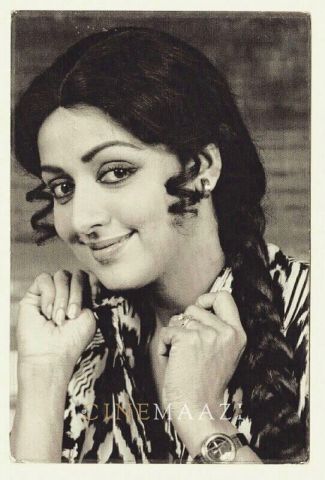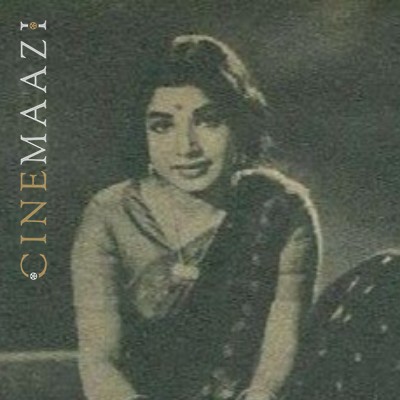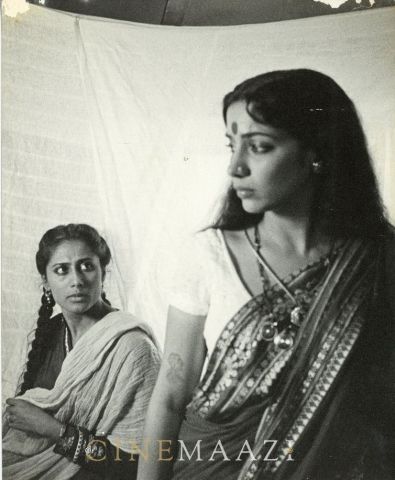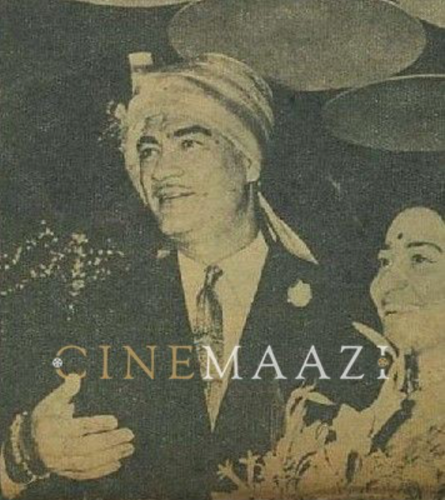India must be the only country in the world where film stars are worshipped as idols in temples; where stars who have played religious figures in films have won elections on the strength of their screen images; where a film shooting or the sight of a star can paralyse traffic; where cinema has an amazing grip on the day-to-day lives of the common people.
That is why counter-productive and destructive though the star system may be for India's sprawling film industry, it cannot but help bowing to the power of the film star. Because it is the star who brings in audiences, sells tickets and makes the money circulate from posh production offices to the dingy cabins and dank corridors of the film trade centres all over the country.
The way things work today, a star who has proved a success in one film can hike up his/her fee, dictate terms and demand unbelievable perks from producers who have no option but to obey every whim of the star. Because if the golden calf is displeased, it could mean no dates allotted to that producer's film, and even a possible abortion of the project.

This slavish dependence on stars is unhealthy for the film industry as a whole, because the unavailability of the actor/actress for any reason spells ruin for all the people who have put their money into the film. For instance, Vinod Khanna's sudden sanyas, Parveen Babi's disappearance, Amitabh Bachchan's near-fatal injury, Divya Bharti's tragic, premature death and Sanjay Dutt's arrest on a criminal charge, all caused the suspension of several film projects and caused unimaginable misery to the producer.
But this is considered just one of the risks in an already unstable profession of show business. Very few filmmakers have the confidence or the ability to make films with newcomers. Only those filmmakers whose success has made them immune to the vagaries of the trade can introduce new faces and see them through to stardom, either via sustained media campaigns or, of course, a successful film. When the newcomer becomes a saleable star, the whole cycle of indiscipline and exploitation of a weak producer and the perpetration of a chaotic system starts all over again.
With the film industry already weakened by the invasions of television, video and cable, distributors who invest their money in films and exhibitors who buy films for their theatres want the safety net of popular and recognisable names, be it a star, a hit-making director or a chart-busting music composer.

In the disorganised and disunited Bombay film industry, proposals are made in a very peculiar manner. The singing of a saleable hero - it is still a very male-dominated field - is often the first step in the putting together of a proposal. The industry is also known for its herd mentality - so a star, director, composer, or writer who has been involved with a hit get flooded with offers, which usually taper off.
The director, who is able to persuade a top hero to sign up, is for the time being a 'big' director. A top heroine who is available and affordable, a few recognisable character actors and the current best-selling composer completes the package that is presented to the distributor, who will then decide if he wants to back the project. Raising funds for a film is a painful and arduous process with interest rates being prodigiously high. The producer's survival often depends on the ability to sell the film for a high price and it is the current box-office rating of the stars involved that more often than not decides the viability of the proposal.
Very few producers are able to rise above the system and make films on their own terms, but it would take a consistent record of hits, or at least cost-recovery films, to come to this stage. Even stars consider it a privilege to work with top-ranking producers and directors, and leave their tantrums behind. Because a good director is more likely to deliver a box-office hit and enhance the star's standing. Which in turn gives the actor or actress more power and more money. Because the initial success of a proposal depends on them, stars milk huge signing amounts, fees and perks from smaller producers, while they are always willing to accommodate established filmmakers with priority dates and reductions in fees. That also explains why producers keep going to successful and popular stars in spite of the risks of dates, price hikes, extraordinary demands and no guarantee of completion of the film.

Star prices from a bulk of a film's budget, and a star who finds him/herself unable to meet the constant pressure for hits, or at least satisfactory earner for all concerned, is thrown out of films. It has happened in the last few years to superstar Rajesh Khanna, the demand for whom dropped almost overnight, and more recently to Salman Khan after he stopped churning out hits. Many actors and actresses found their thriving careers abruptly cut short when their box-office draw reduced - Randhir Kapoor, Kumar Gaurav, Dimple Kapadia, Rekha, Jaya Prada, to name a few, all found themselves suddenly out in the cold with no new film offers coming their way. Madhuri Dixit, once number one, is struggling to retain her position because producers complain of date hassles. They did not mind the problems when she was giving hits, but after a few films flopped, nothing she does seems to be right.
Stars like Mithun Chakraborty and Rishi Kapoor, who have remained steady in spite of several flops, have done so because of their level-headed and pragmatic approach to their careers. They never charged astronomical fees, didn't vary them according to the fate of their last film, completed the projects in a reasonable amount of time, thus ensuring their films were not over-priced. If budgets are kept in control, it is possible for everyone connected with the film to make a respectable profit, and they have no problems repeating the star - even if he or she is not "number one".
From among the heroines,Hema Malini, Mumtaz, Zeenat Aman, Poonam Dhillon, Rati Agnihotri, Meenakshi Seshadri survived so long in spite of bad patches, because of their professionalism and cooperation with producers, when more talented actresses like Raakhee and Moushumi Chatterjee didn't last as long. Top stars like Amitabh Bachchan and Sridevi, because of market compulsions beyond their control, outpriced themselves, so that ordinary producers could not dream of making films with them.

Ajay Devgan, whose price at one point reached an impossibly high figure, had said in an interview that he wasn't the one who upped his fees, but after the success of his first two films, producers came to him with brief-cases full of money to sign him, an wouldn't take no for an answer. All successful stars probably face the same problem an end up signing films they regret later.
In the business of proposal-making, where the stars are signed first and then the music recorded, the script of the film is the least important part of the film. However, some of todays' young stars have started becoming particular about the subject. Shah Rukh Khan insists on a complete bound script, and because he is successful an in demand, producers are prepared to oblige him. Aamir Khan and Sunny Deol have limited the number of films they accept and work only with the filmmakers they like. They don't wish to be "number one", they are content with doing good and consistent work. Anil Kapoor and Jackie Shroff had to do major rethinks on their career strategies when their films started flopping.
Stardom is obviously not forever, an in the bid to hold on to it for as long as possible, stars make mistakes that cost them their careers. Power is obviously the major corrupter and actors who are well-behaved and humble when they entered the industry turn into nasty, irresponsible and greedy monster when they became successful.

The contribution of the press in creating images of the stars and keeping them in the news cannot be denied. A negative story about a star planted in a magazine can cause terrible harm to a star's reputation and standing in the industry. It is very difficult to fight rumours and repair the damage. On the other hand, magazines keep promoting their favourites and keep them in the public eye when their careers are down. People like Chunky Pandey, Rahul Roy, Pooja Bedi, Sangeeta Bijlani, Sonu Walia, Somy Ali, owe their visibility entirely to their tactic of making themselves available to film magazines for spicy interviews and uninhibited photographs.
There was a time when the studio was king and stars merely salaried employees. Today people barely know who acted in the early hits, but the filmmakers of that period from the pioneering Dadasaheb Phalke to Himanshu Rai, Debaki Bose, P.C. Barua, V. Shantaram, A.R. Kardar, Sohrab Modi, Kidar Sharma and others, are idolised by film students and historians. That is because the actor was subservient to the studio-owner, producer and director. If an actor misbehaved with a filmmaker, he never got to work again. Like the great studios in Hollywood, India also had its New Theatres, Bombay Talkies, Ranjit, Prabhat, AVM, Gemini, and Filmistan, controlling the film trade, with stalwarts like B.N. Sicar, V. Santaram, Himanshu Rai, Chandual shah, S.S. Vasan, A.V. Meiyappan, Shashadhar Mukherjee running them.
As various social factors led to the increasing popularity and social acceptance of films, stars started breaking away from the studio system. The transfer of power from studios to independent producers to stars took place gradually over the years.

K.L. Saigal, Sulochana, Prithviraj Kapoor, Chadramohan, Naseem, Kanan Devi, Devika Rani, Shanta Apte, Ashok Kumar, Leela Chitnis, Noorjehan, Suraiya are the stars of the '30s and '40s that people remember even today. Occasionally one comes across names like Master Vithal ("the Indian Douglas Fairbanks"), the Billimoria brothers, Jahanara Kajjan, Khurshid, in accounts of the pre-golden age cinema, but nothing much is known about them.
The star system started getting formalised in the early fifties, and later in the decade, the immortal trio of Dilip Kumar-Raj Kapoor-Dev Anand dominated the industry. Snging star Suraiya was probably the first actress to command a frenzied male fan following; according to film lore, men camped for days outside her house to catch a glimpse of her, and slashed their wrists in disappointment when their proposals were firmly turned down.
Still, in the nascent days of the star system, the actors knew there were certain limits they could not cross. Director Mehboob Khan was known to let loose a volley of abuses when any actor goofed, and great filmmakers like Bimal Roy, Guru Dutt, Nitin Bose, J.B.H. Wadia, command respect. The actors knew their place - even though the greatest and all-time favourite stars like Nargis, Madhubala, Beena Rai, Meena Kumari, Nutan, Bharat Bhooshan, Raaj Kumar, Nimmi, Geeta Bali, Premnath, Waheeda Rehman and Shammi Kapoor belong to that period; Shammi Kapoor was perhaps the first star with a mass following of young people.
The sixties saw the genesis of the ills that plague the industry today. The director started accepting a lower position than the star in the film hierarchy and the producer, even lower, though he was the one who paid the stars and crew and put the project together. The system of multi-starrers and multiple shifts started then, causing a complete turnaround in the working of the film industry.
The early seventies were to see the birth of a phenomenon called the superstar in the form of an ordinary-looking, minimally-talented Rajesh Khanna. After his reign was over, people couldn't believe that he could have won such a massive fan following.

By then the biggest star the industry had ever seen - Amitabh Bachchan - had made his appearance. According to Javed Akhtar who was co-writer of some of the films (Zanjeer -1973, Trishul-1978, Deewaar-1975, Sholay-1975) that propelled Bachchan to "number one" position, the entry of the criminally-inclined, angry young man or anti-hero, coincided with the complete breakdown of a traditional lifestyle, legal system and society as it had been until then. His films mirrored the rage and disillusionment of the youth in the seventies. They saw themselves in his roughhewn screen persona, and fantasised about the power they never had.
Two decades later, the creation of a more evil and vicious anti-hero, personified as Shah Rukh Khan in Baazigar (1993), Darr (1993) and Anjaam (1994) caught the imagination of the public, because the intervening years had seen the deterioration of values and a shift in moral attitudes that made society and films glorify criminals and gangsters. These films made Shah Rukh the new superstar. Like Amitabh, he has the talent and discretion to sustain his position longer than his peers and contemporaries did.
Both Amitabh Bachchan in the early part of his career, and Shah Rukh Khan today, represent the saner side of the star system. They are both tremendously hard-working, devoted to their profession and meticulous about their craft. Even though Bachchan has not done a film in three years, his following remains undiminished, his star aura intact.
There is a saying in the industry that a star must be good to people on his way up, because he will meet the same people on the way down. Not many of them remember that in their glory days.
The South Indian film industry, comprising films made in Telugu, Tamil, Malayalam and Kannada, has all the features of the Bombay star system minus the arbitrariness. For instance, the stars there, particularly in the Tamil and Telugu industry, are paid in crores, more than the budge of a medium-sized Hindi film.

However, by the adulation they get and the box-office success they guarantee, they more than earn their enormous fees. Rajnikant, Chiranjeevi, Nagarjuna, Vijayashanti, Khushbooand Naghma (the last two Hindi film rejected) can make any film work. Khusboo even has a temple built in her name in suburb of Madras. And former matinee idols, M.G. Ramachandran, N.T. Rama Rao and Jayalalitha, turned out to be popular Chief Ministers of their states. In other parts of the country too, film and TV stars like Sunil Dutt, Rajesh Khanna, Vyjayanthimala, Deepika, Arvind Trivedi and Raj Babbar have successfully switched to politices.
But they are punctual and disciplined and dare not be otherwise. The South Indian film industry has always been a sticker for discipline and can keep erring stars in check by forming a united front against them. Recently, Rajnikant and Kamal Hasan were threatened with a ban, because they had increased their fees by an unjustifiable amount. Stars there are not allowed to sign dozens of films at a time. The industry works methodically and films are completed within a few months, unlike Bombay where a normal film takes at least 18 months to complete. There is, of course, no upper limit.
In the South, stars treat their producers and directors with respect, honour their commitments and reach the set or location with make-up whenever they are asked to report.
In Bombay arriving hours late for shooting, or not turning up at all is normal; it is not even unthinkable for a star to allot dates promised to one producer to a bigger project than would fetch them more money. That is why, stars from other centres - like Uttam Kumar, Suchitra Sen, Kamal Hassan, Rajnikant - who tried working in Hindi films from time to time gave up in disgust.

Hollywood has the system of giving percentages to top stars to ensure their interest in the welfare of a film, and also insurance to protect the filmmaker from risks that cover accidents and star caprices. Besides, there are so many stars available at any given time that finding a replacement at short notice is not difficult, though Hollywood also has its superstars like Sylvester Stallone, Arnold Swarzenegger, Tom Cruise, Bruce Williams, Kevin Costner - all-male, incidentally whose names sell projects and movie-tickets. But it is possible for an independent filmmaker to make a movie with lesser-known faces and emerge with what is known in Hollywood parlance as a sleeper (hit).
Also, movie stars have to share popularity with baseball players, rock stars and TV anchor persons. It might be possible for a Hollywood star to walk down the mall or do his own shopping without being mobbed, but Indians have no qualms about invading a person's privacy. On the negative side, stars there have to contend with lunatic fans who try to harm them, and live in heavily guarded fortresses. An Indian star can shoot on the streets with no danger to his/her life.
In Hollywood, however, a successful director is as important and well-paid as the biggest star in Hollywood. Today, nobody would even ask who Steven Spielberg was signing for his film, the project would sell anyway. At the same time, Woody Allen can keep making small personal films and have them work on the strength of his loyal fan-following built over the years. Here Mani Ratnam, Subhash Ghai, Pahlaj Nihalani, and David Dhawan are among the few who can work on their own terms.
A legal system that offers quick justice also makes an American or European star answerable to the studio or the producer. The recent case of Kim Bassinger being slapped with a multi-million dollar fine for walking out of a verbal commitment to do Boxing Helena must have sent a strong message to other stars to behave or else......
In India, producers hesitate to take a star to court for breach of contract or other misdemeanours, because of the notorious delays in procuring justice. In spite of some attempts by organisations like the Film-Makers' Combine and the Indian Motion Picture Producers' Association, to force stars to honour their commitments, the rate of successes depends on how much in demand the star is. They can threaten Dimple Kapadia with a ban for walking out of Kartavya (1979) because her career is at a low, but they cannot make Sanjay Dutt finish the films he is acting in before he signs new projects. They can fine Govinda or Vinod Khanna for harassing producers, but they cannot make them pay up. Stars are protected from punishment by the sheer number of films they have on floors at any given time. It producers want to ban a star, dozens of them have to agree to bear financial losses, or worse, abandon their projects. The Cine Artists' Association is also supporter of fickle stars.

The biggest point in their favour is that the industry needs them to survive in an increasingly precarious era. At one time, the Hindi film industry had a small but thriving parallel cinema movement that worked without the crutch of established star names. In fact, it created its own stars like Shabana Azmi, Naseeruddin Shah, Om Puri, Smita Patil, Amrish Puri, all of whom eventually found acceptance in the mainstream cinema. But today, a director who wants to make an offbeat film also needs star names to make it viable. That's why the parallel cinema approaches stars like Dimple Kapadia, Rakhee, Hema Malini, Mammooty and Mohanlal (the last two are both Malayalam megastars) to get financiers, distributors and audiences interested in their films. Today the names of Shyam Benegal, Govind Nihalani or Ketan Mehta are not enough to get even the government-backed National Film Development Corporation to look at a project.
The high investment on stars has brought about another pernicious trend in the industry, that of producers 'discovering' and promoting star children. Among the stars in the film industry today - Rishi Kapoor, Sunny Deol, Anil Kapoor, Sanjay Dutt, Aamir Khan, Salman Khan, Ajay Devgan, Pooja Bhatt, Saif Ali Khan, Karishma Kapoor, Raveena Tandon, Twinkle Khanna, Bobby Deol, Tabbu, Sanjay Kapoor - are all industry relatives.
It is very difficult for an outsider to crash into the scene today. Mithun Chakraborty, Jackie Shroff and Shah Rukh Khan are the only top male stars who had no industry connections (females still have a chance, because of the reluctance of industry men to let their daughters act). Producers feel that if they are to spend money on grooming and introducing a new face, why not invest in their own children. This is happening in the South - Chiranjeevi, Venkatesh, Nagarjuna, Balkrishna are all industry brats. But once inside the magic gages, they have to slog as hard as anybody else.
For an aspiring actor, the road to success is paved with humiliation and heartbreak. Woman have it worse than men. So if at all they make it big, they want to get their own back for all their past suffering. Rekha reportedly enjoyed harassing filmmakers with all sorts of pranks to avenge the pain of struggling days.
To look at it from the star's point of view, the pressure to produce box-office hits is killing. Since so much money is invested on their mythical powers to make the box-office tick, stars are made and broken every Friday when a new film is released. One hit and a star is at the top, a flop and he is down in the dumps. Audiences are not loyal any more, career spans can be dangerously short. This constant teetering on the edge, the anxiety every time a new film comes up, and isolation from the real world makes stars lose their sense of equilibrium very soon. They gradually find themselves unable to react to people and events normally. They continue to live in an alternate reality that they have helped create. Waking up from this dream is a lethal shock. After paying a tough price for success, failure is all the more traumatic.
So while they are enjoying the fruits of stardom, they want to live it up, never mind if it is at the cost of a hapless producer. They want to enjoy the adulation of the masses and savour the taste of unlimited power while it lasts. That makes them enjoy the sight of producers grovelling before them; makes them try to see how much they can demand and get away with. They are like children pulling out the wings from butterflies. They want to live several lives in one day. Because, for them, there may be no tomorrow.
This essay was originally published in the book Frames Of Mind- Reflections Of Indian Cinema edited by Aruna Vasudev. The images used were taken from Cinemaazi archive, the original essay and the internet.
Tags
About the Author







.jpg)


